
Tower Stacks
The product development of Tower Stacks (for SmartGames)
Raf Peeters, January 2023
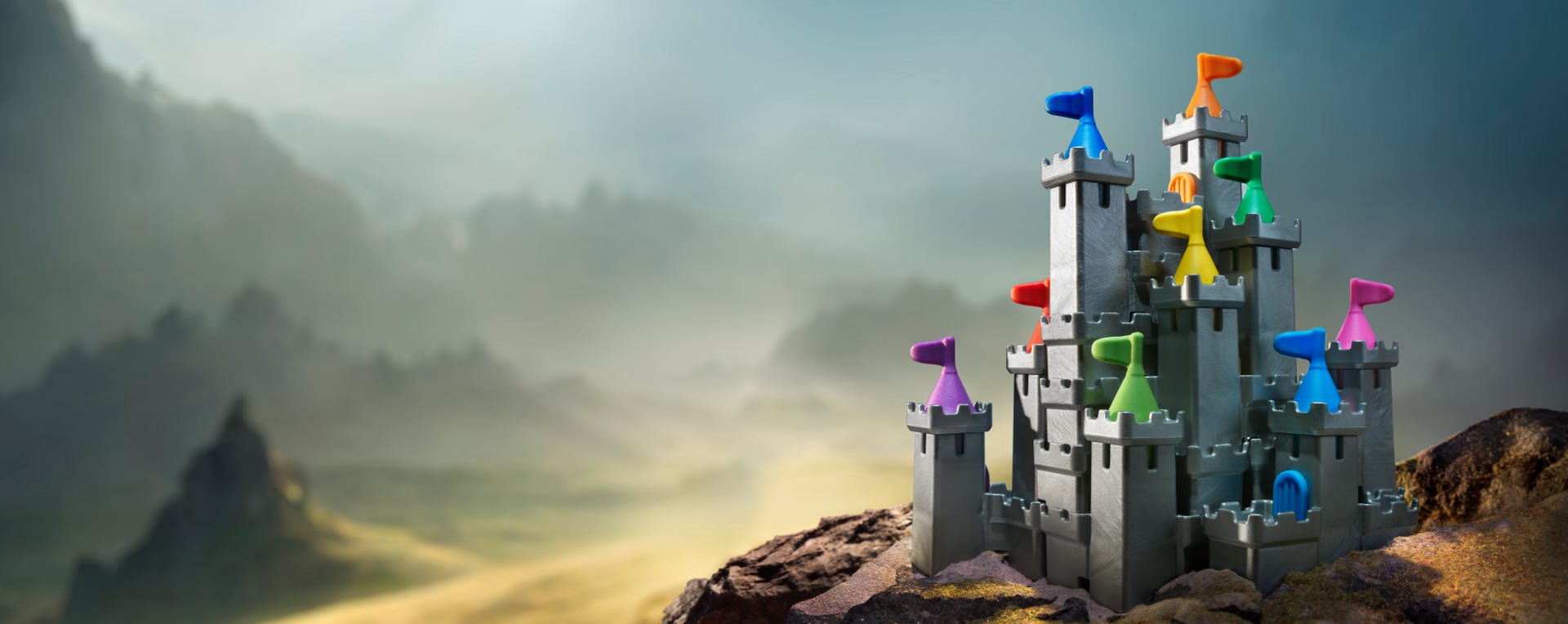
As the author of several SmartGames featuring castles, such as Castle Logix, Camelot JR, and Walls & Warriors, the theme continues to inspire me. My latest creation, TowerStacks, was inspired by Atlantis Escape, another game I had designed previously. But while Atlantis is a connection game where players must make a path from the high tower to the exit, TowerStacks is a 3D packing problem (or a 2D packing problem with multiple layers).
KING OF THE CASTLE
Some of the harder challenges in Atlantis require you to build 2 layers on top of each other. I wondered if I could bring this idea to the next level (pun intended) and if it would be possible to keep on building higher, layer by layer until all puzzle pieces were used.
One unique aspect of TowerStacks is that it doesn't require a game board. Your setup (this is the pieces you place on the ground floor) is basically your game board for that challenge. Each puzzle piece has a specific shape. This is also different to Atlantis, where all pieces are rectangles of size 2x3. Each puzzle piece has a specific color rooftop, to make them easier to identify in challenges and solutions. The towers will also block the placement of puzzle pieces in higher levels, so automatically the surface area available for puzzle pieces is reduced with each floor built.
Initially, I wanted to make a preschool game. The first prototypes of the blocks were quite big and sturdy. But when I played with them, I quickly realized that this game would be way too hard for young kids, unless I kept the challenges really simple. That would be a pity, because there were so many beautiful and interesting challenges to be made with 9 puzzle pieces. I tried a set with only 8 pieces, but this drastically reduced the variation between the different solutions. And enough variation is always the criterium I am looking for in a concept for a new SmartGame.
Another reason to make it a more adult game, is the fact that you really need concentration and fine motor skills, something which is not alway present in young kids. The lack of a game board means that you sometimes unintentionally move puzzle pieces of the ground floor, when you stack pieces on top of them, especially if you want to be too fast. To avoid this as much a possible, I tried to select challenges that already stick together. And all the pieces you place on top of the ground floor will connect them together, so once you finished the bottom layers, everything else will stay stable. It will also help if you don’t play this game on a very smooth, slippery surface.
At first, the object of the game was to use the 9 puzzle pieces in all challenges. But testing proved that this was way too hard for challenges in the STARTER or JUNIOR level. As a solution, I removed 3 puzzle pieces in these levels to make the gameplay easier. The thing l really like about this puzzle game, is that each result looks very different, but always looks like a castle. In some solutions you have a very wide castle with only 2 or 3 floors. But in other solutions the castle is very high, with up to 6 floors. Therefor I see many customers (and children) just playing with the pieces to create their own castles, without looking at the challenges in the booklet. You can make your own challenges, for example trying to build the highest possible castle with some pieces on the ground floor. This is all fine for me. I always like it when the toys I designed are being used in different ways than the one I intended.
If you look at the ABS material, you will see that it’s different from the grey plastic we use in other SmartGames. The lines you sometimes see are no flaws, but the result of the choice for this material. Some will like this, some won’t. But we wanted to try something different and this shiny, silvery color looked better in top view, which is the point of view you have most of the time when you play this game. The flags are made of TPR. I really wanted to have flags on this castle and I was afraid that a hard ABS material would be too sharp. The TPR material is soft and a bit flexible and doesn’t have that problem. The only thing I couldn’t solve, is that the flags have a fixed position on top of the roof. This is probably only a problem for the neurotic part in me, who wants to have all flags pointing in the same direction when you finish your castle (like they would in reality because how the wind is blowing).
The packaging is different from the other SmartGames in the Classic category. Normally we use a square box for games of this size and price. But a square box would be too big, because it already needed to be thicker to accommodate the puzzle pieces with towers. I designed a cardboard insert with a print, so that you can easily see how to pack everything back inside the box. A plastic blister would have been easier to design (and cheaper), but we try to avoid as much single use plastics we can these days in our products. Tower Stacks will become available in Summer 2023.
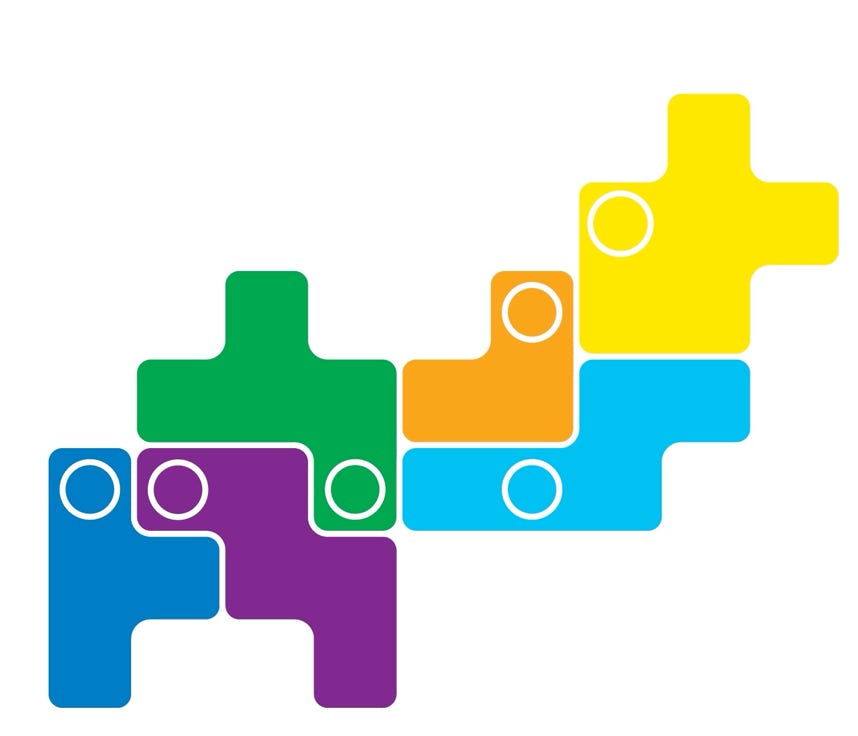
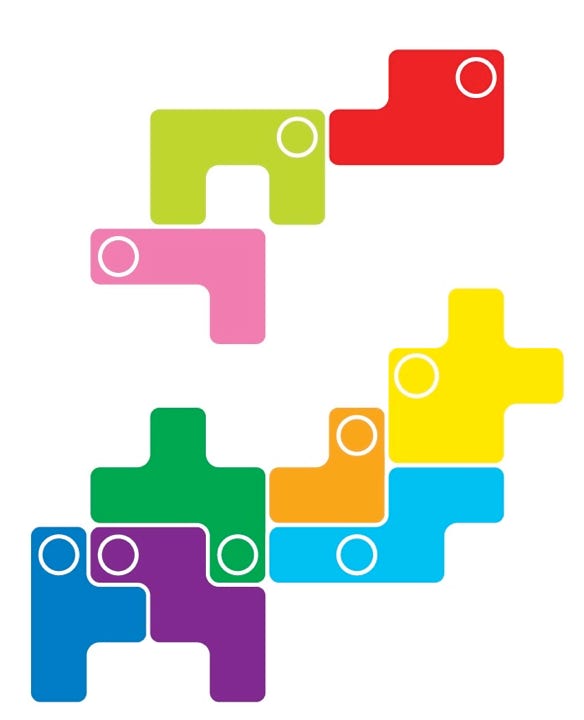
Example of a challenge and solution of TowerStacks with only 2 floors.

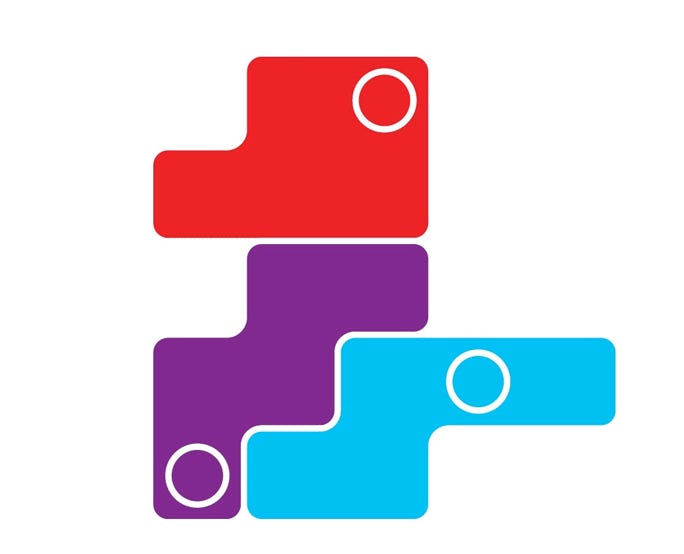
Example of a challenge and solution of TowerStacks with 5 floors.
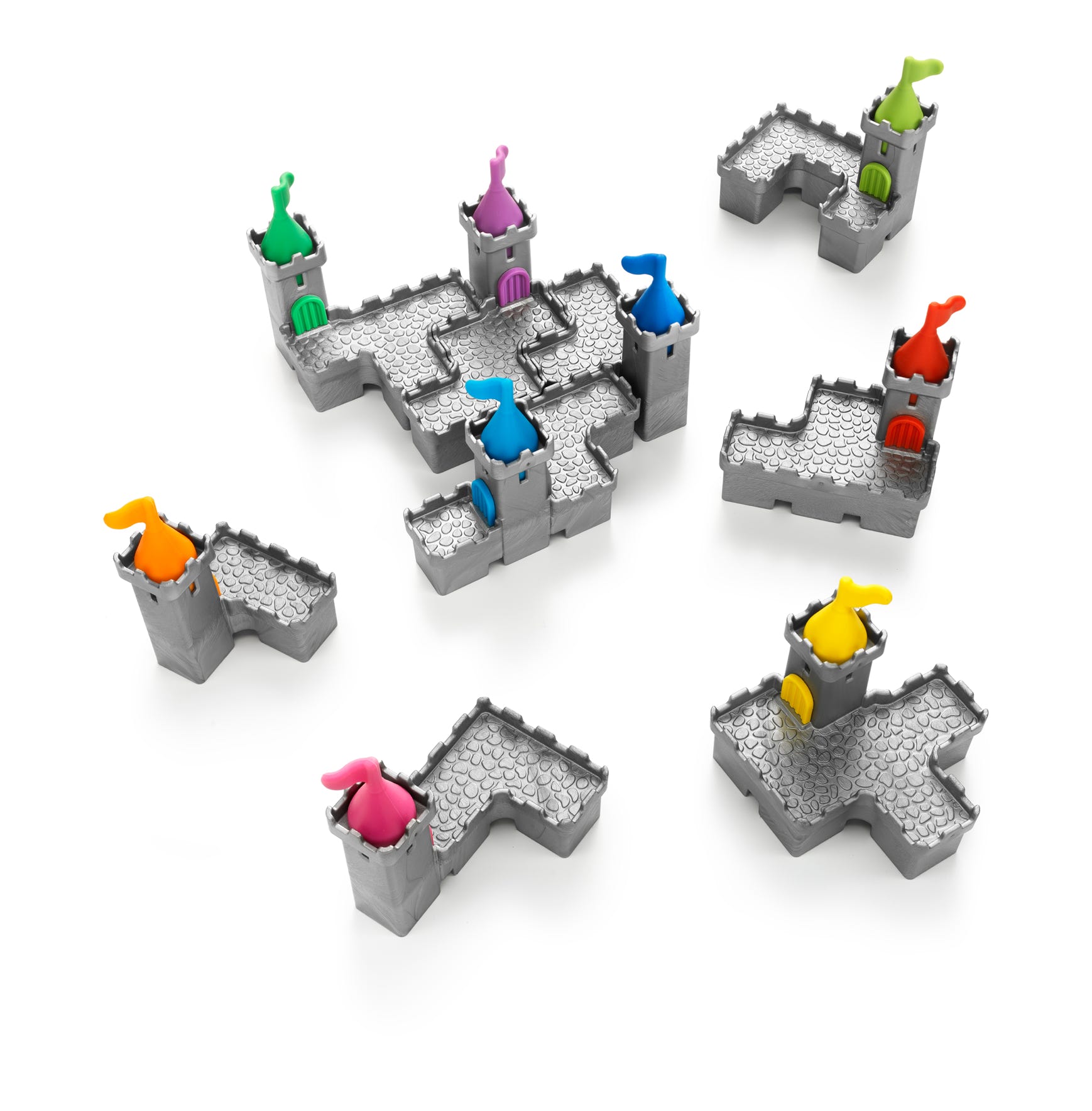
GAME RULES TOWER STACKS
BEFORE YOU START
Remove the yellow, dark green and purple puzzle pieces before you start with the STARTER or JUNIOR levels (these pieces are not needed to solve those levels). In all the other levels you MUST use all 9 puzzle pieces!
1 Choose a challenge. Each challenge shows the ground level of a castle, made with different puzzle pieces. Puzzle pieces are indicated by the color of their rooftops and doors. To set up the game place the indicated puzzle pieces adjacent to each other as shown so that the top view matches the challenge.
2 Stack the remaining puzzle pieces ON TOP of the ground floor:
A) In the STARTER and JUNIOR level challenges require 6 pieces, while in the other levels challenges require all 9 pieces.
B) Castle pieces should always be completely supported by other pieces on the floor(s) below them. The castle cannot have overhanging structures or bridges.
C) The castle can have more than 2 floors. You don’t know how many until you have found the solution!
D) Castle pieces cannot be placed on top of towers.
E) You must build up! Pieces cannot be added to the ground level.
3 There is only 1 solution, which can be found at the end of the challenge booklet. Solutions show the position of the castle pieces on the different floors, from high to low.
Website ©2023 Raf Peeters
Products and images: © Smart